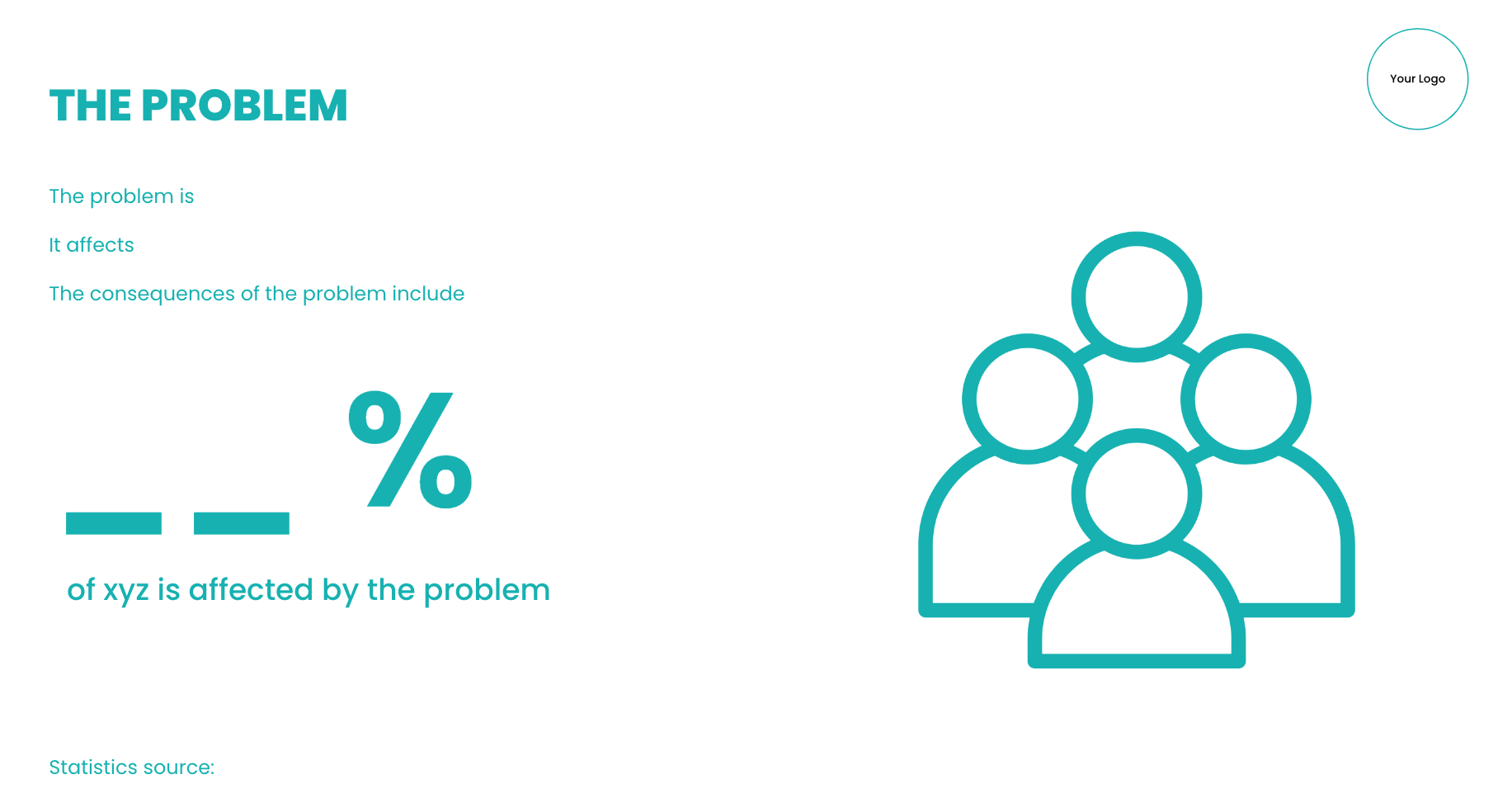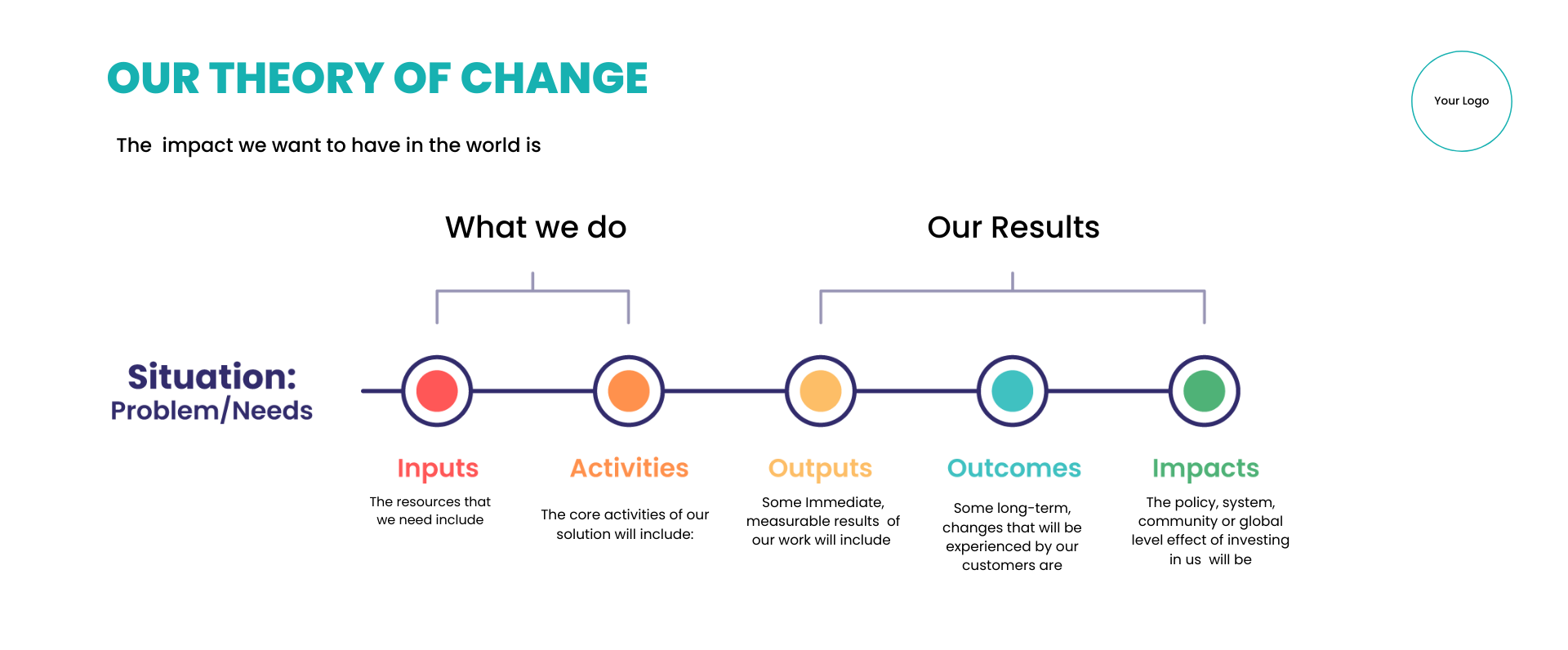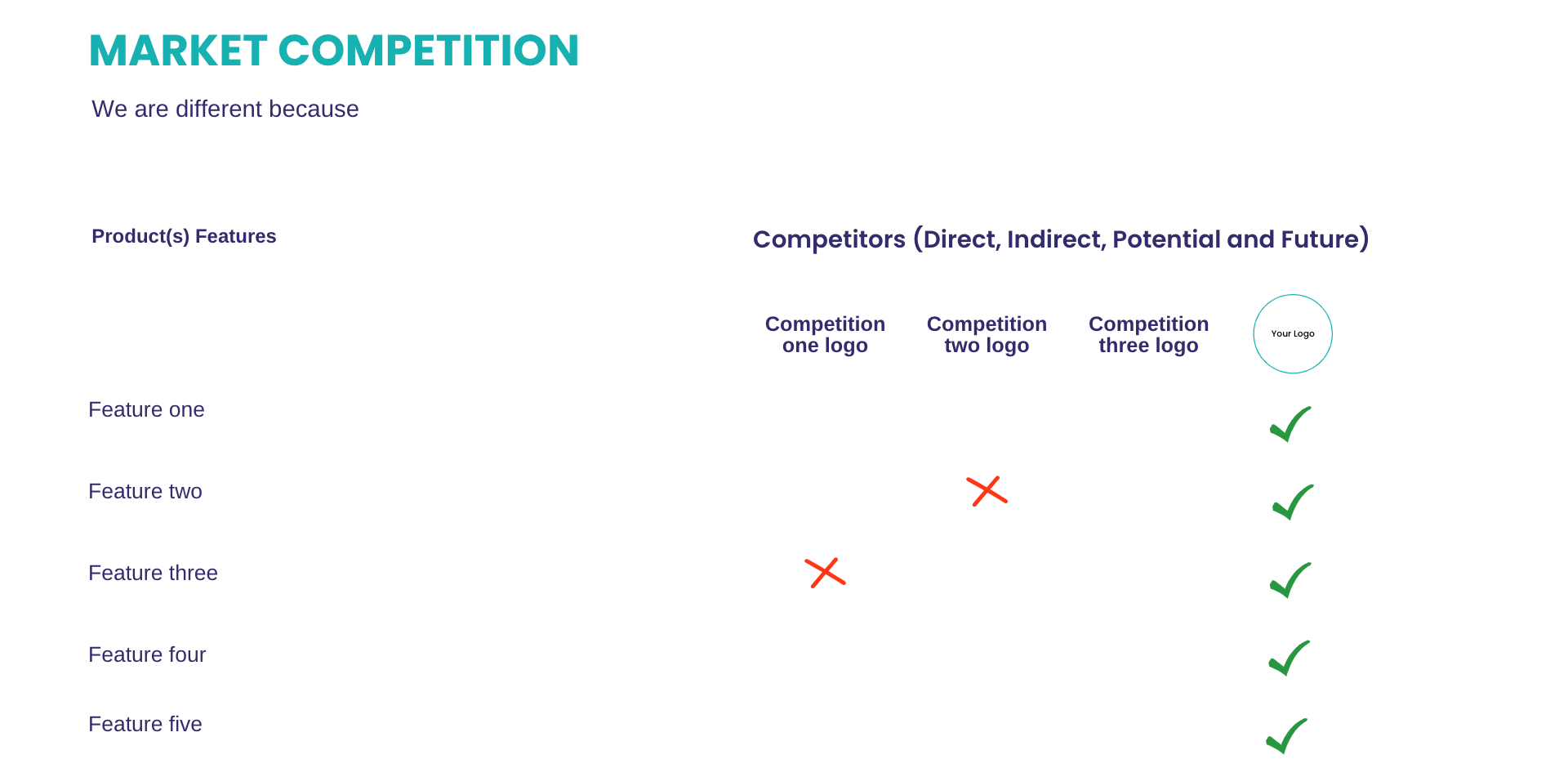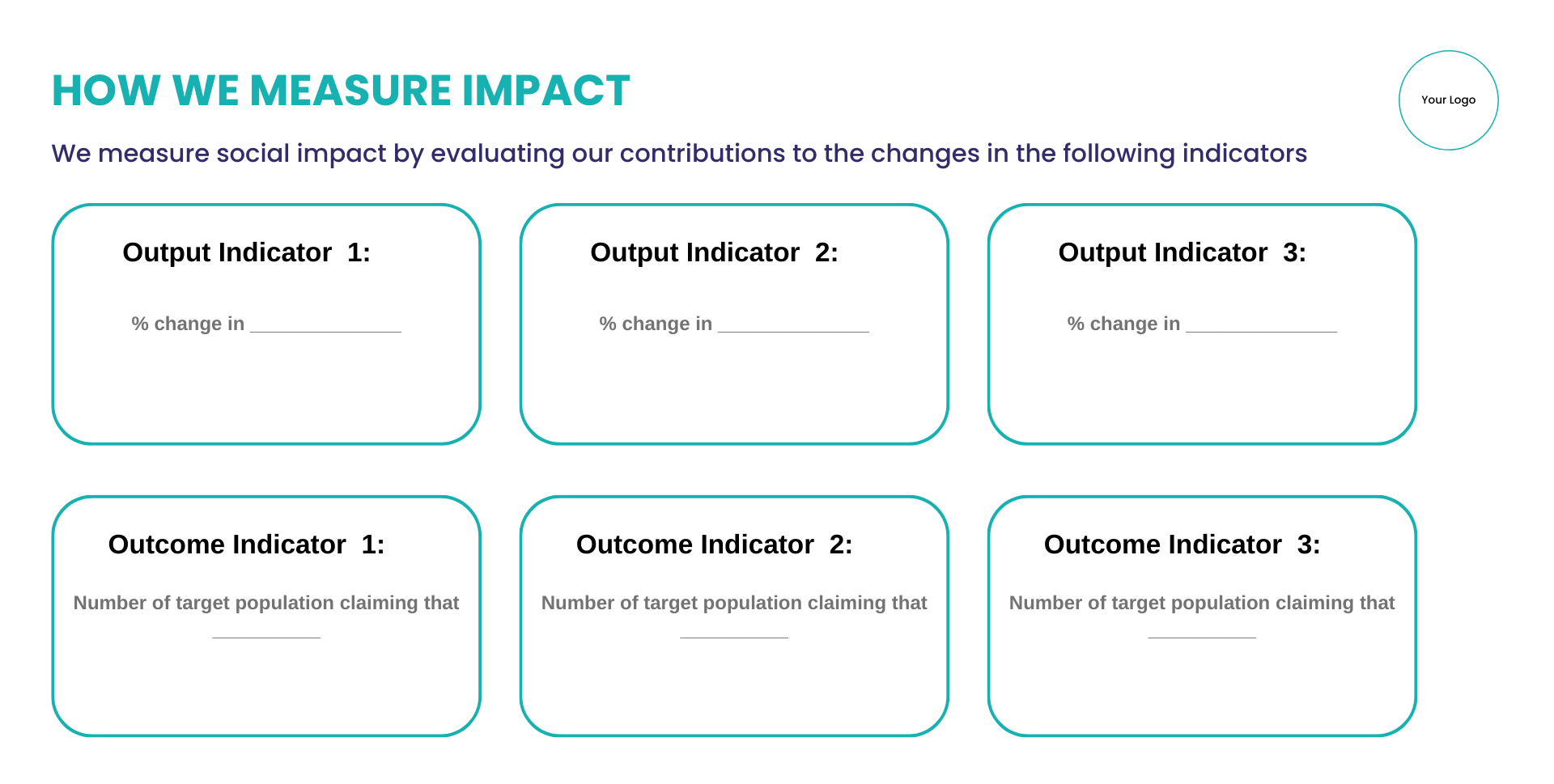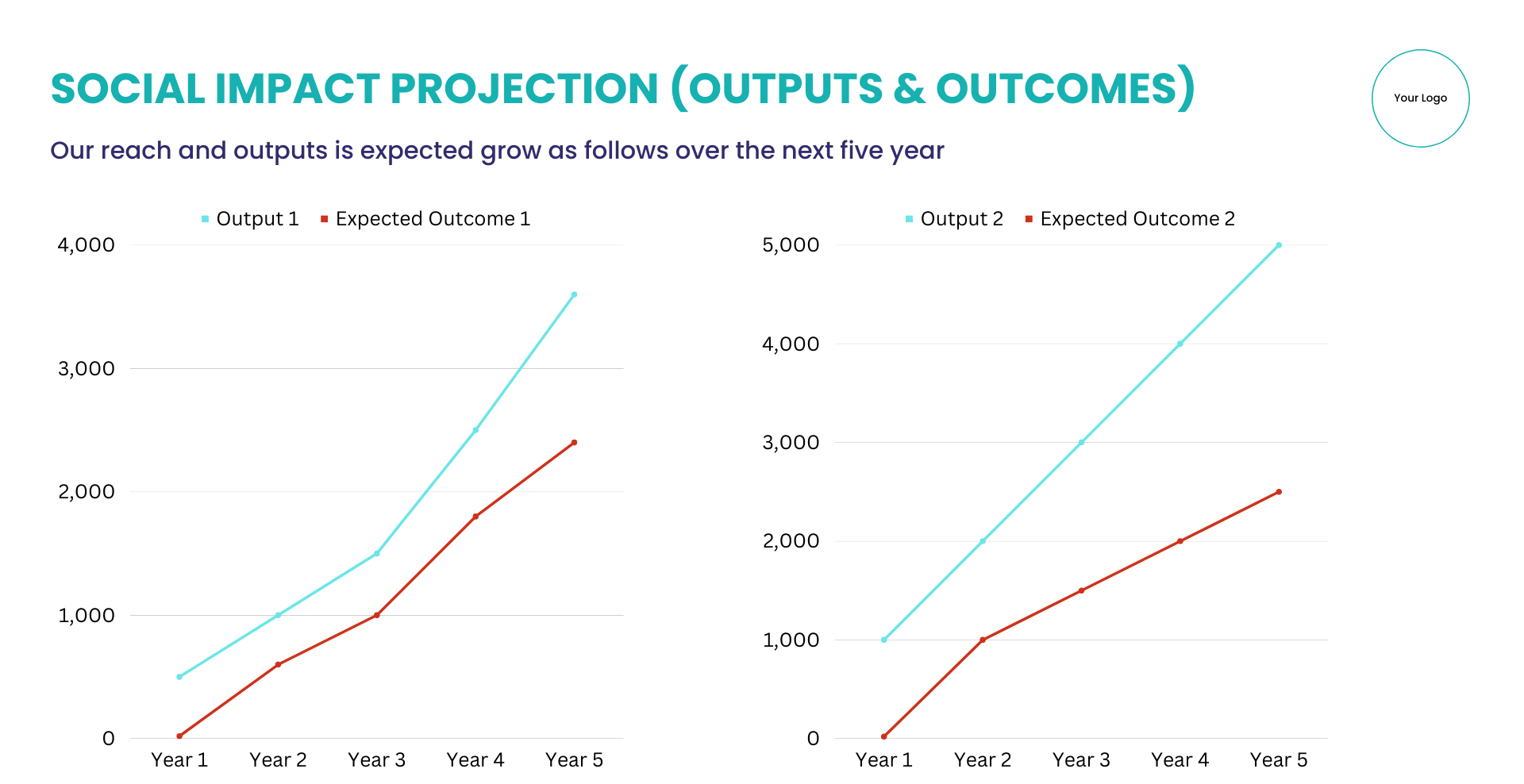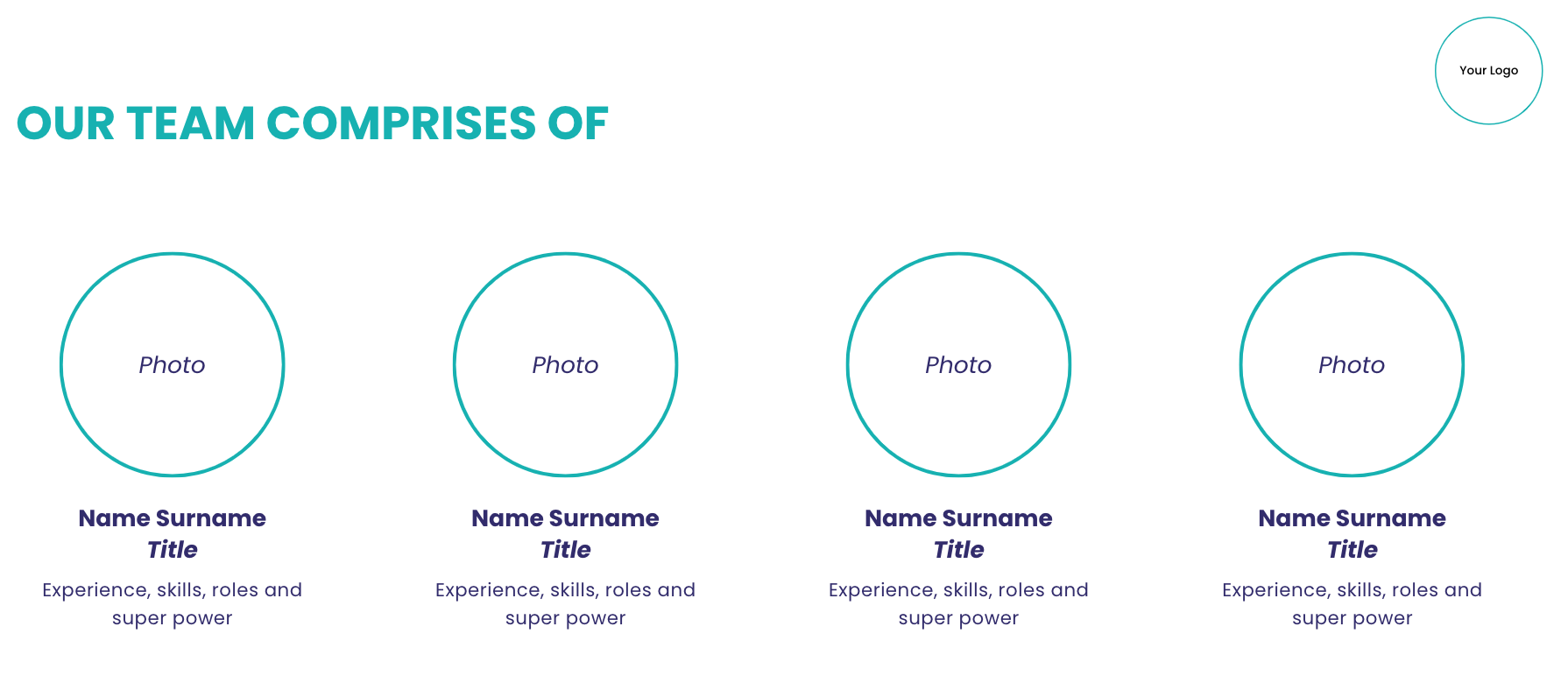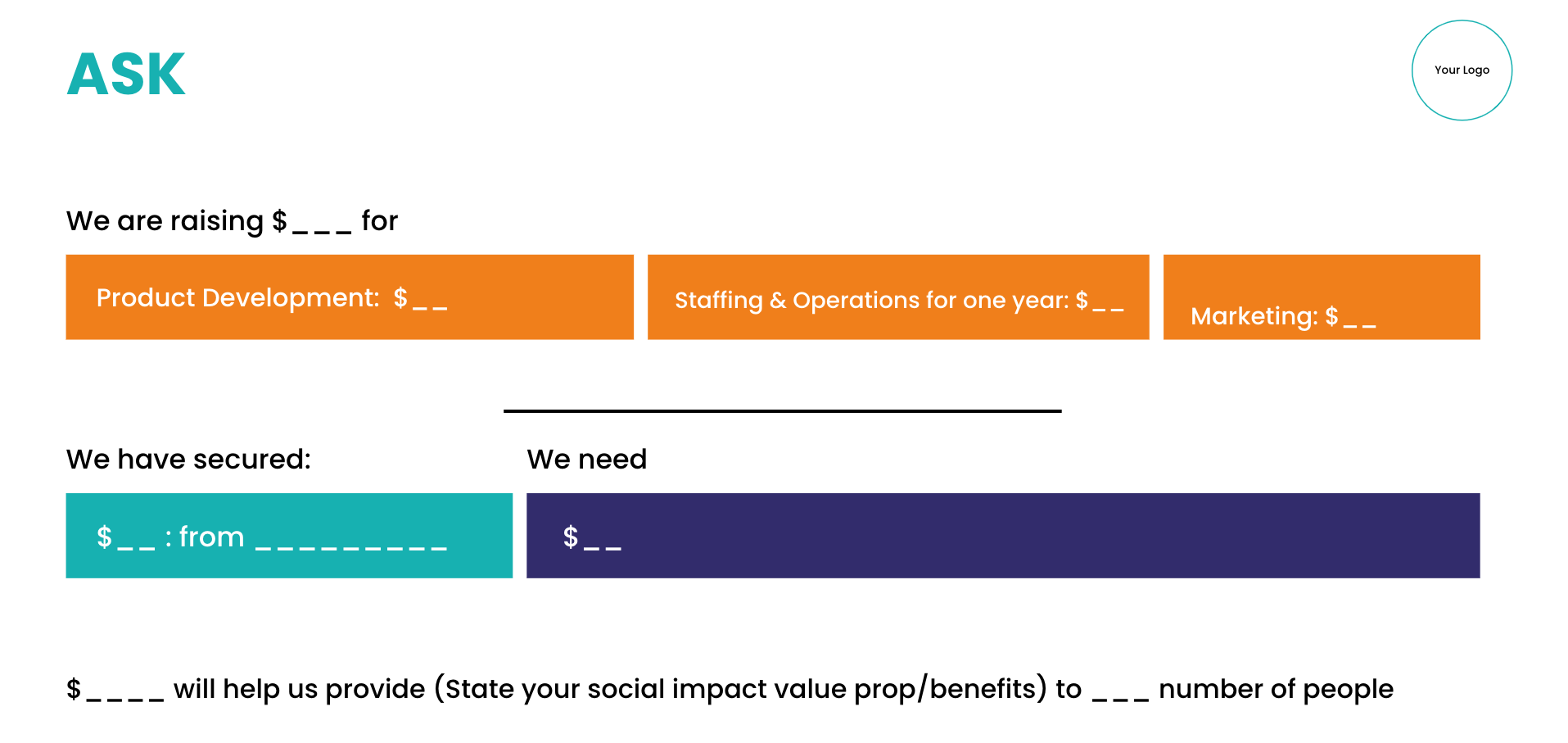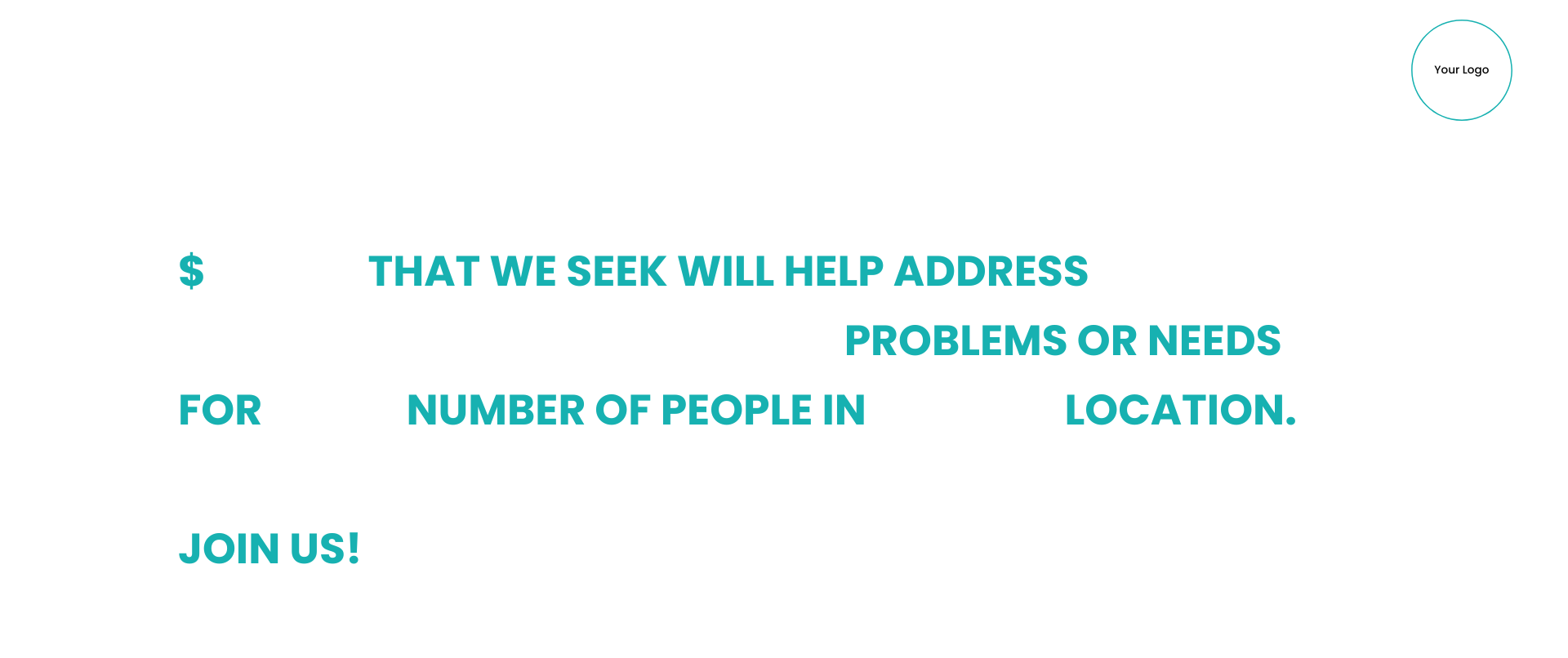How to effectively pitch your social enterprise to investors
Delivering a perfect pitch to investors can be daunting, but with the right preparation and approach, it can be a successful and rewarding experience. Here is an instructional guide to help you deliver a perfect pitch to investors.
General principles
Research your audience: Before you begin crafting your pitch, it’s essential to research your audience. Find out who they are, their interests, and what they expect from you. This information will help you tailor your pitch to their needs and interests.
Define your objective: Your pitch should have a cleargoale. Decide on the specific outcome you want from your pitch, whether to convince the instructor to approve a project or to receive funding for a new initiative.
Craft your message: Your message should be concise, clear, and compelling. Start with a hook that captures the instructor’s attention and makes them want to hear more.Ensuree your pitch includes the mostessentialt information, including your objective, the benefits of your proposal, and any relevant data or statistics.
Practice your delivery: Once you have crafted your message, practice delivering it in front of a mirror or with a friend. Pay attention to your tone of voice, body language, and pacing. Make sure you are confident and engaging in your delivery.
Anticipate questions: Be prepared to answer any questions the instructor may have. Anticipate potential objections and prepare answers that address them. This will show the instructor that you have thought through your proposal and are ready for potential challenges.
Follow up: After your pitch, follow up with the instructor to thank them for their time and to answer any additional questions they may have. This will show your dedication and commitment to your proposal.
What makes a great pitch deck?

Pitch decks are mainly used by social ventures to persuade partners, supporters, or investors to collaborate with them. These short presentations aim to help others quickly understand your initiative. The best pitch decks assist you in telling your story and are visual aids that complement your verbal presentation.
A well-designed and comprehensive pitch deck is crucial to convincing investors that your venture or project has massive growth potential, so you can obtain the necessary resources to improve and expand it. It typically consists of 10 to 20 slides that summarize your business or project and describe its plans, goals, and vision.
An effective pitch deck should have clear and visually appealing graphics with a text size of 30 points, and you should be able to go through it within 10 to 20 minutes.
15 Essential Slides of an Investment Pitch Deck
Developing an investment pitch deck is crucial for social entrepreneurs to communicate their venture’s value to potential investors effectively. Here are instructions and guidelines for each component of the pitch deck:
- Keep it simple: Introduce your venture with a clear and concise statement.
- Include your venture’s name, logo, and a tagline that encapsulates your mission.
- Identify the social or environmental issues you aim to address.
- Present relevant data and statistics to emphasize the significance of the problem.
- Use compelling visuals to illustrate the challenges and make an emotional connection.
- Explain the logic behind your solution and how it will lead to positive outcomes.
- Illustrate the cause-and-effect relationship between your efforts and the desired impact.
This slide presents two important information – your solution and your value proposition
For your solution
- Present your solution, product, or service that is designed to tackle your problems
- Illustrate how your solution stands out and sets you apart from existing approaches
- And use visuals or videos to showcase your solution in action
Value Proposition:
- Clearly express the unique value and benefits that your venture offers to beneficiaries and customers
- Focus on benefits – not just features. Explain the pains your solution relieves.
- And emphasize the positive societal or environmental impact your venture can make
- Define your target market, quantify its size, and highlight growth potential
- Specifically, highlight your Total Addressable Market [TAM], Serviceable Addressable Market] SAM and Serviceable Obtainable Market or Share of the Market (SOM).
- Identify key trends and opportunities that contribute to the viability of your venture
- And show evidence of demand and interest from potential customers and partners
Below is a template for this slide.
- Identify direct and indirect competitors.
- Analyze their strengths and weaknesses relative to your venture.
- Showcase your competitive advantage and why you’re better positioned to succeed.
- Explain how your venture operates, creates, delivers and captures value.
- Here, emphasize your revenue streams and cost structure
We do not have a specific description for this slide. Feel free to illustrate your Business Model Canva creatively and clearly.
- Present your pricing model, revenue streams, and plans for generating consistent income.
- Include evidence of how you have validated your price point [Price Point Validation], which will make this section more compelling.
- Also include your unit economics, emphasizing your definition of a unit, unit revenue, unit costs, and the unit contribution margin.
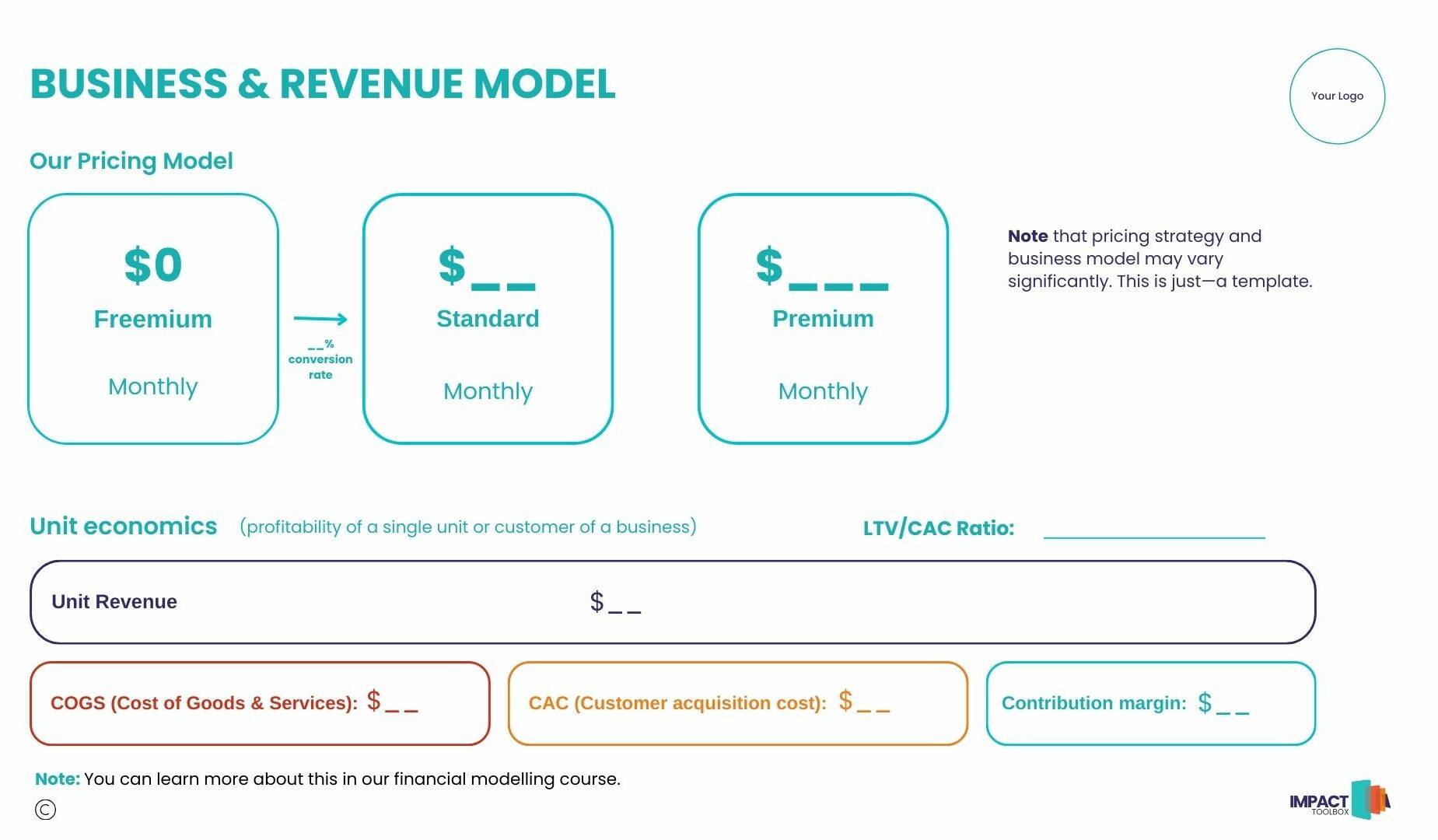
- Share financial forecasts, including revenue projections, expenses, and profits (marginal contribution).
- This may include your expectations of your revenue, costs (COGS and CAC) and marginal contribution over the next two to three years.

- Quantify and explain the social or environmental impact of your venture
- You can describe the sustainable development goal(s) that you are contributing towards.
- It is important to emphasize what indicators you will track and include some projections of how your contribution will grow over the next two to three years.
- You may even include testimonials or case studies from beneficiaries to reinforce your impact.
- Outline how you will reach your target audience, starting from your early adopters to reaching a wider range of potential customers.
- Share branding, communication channels, promotion and partnership plans
- Introduce the key members of your team, highlighting their expertise and relevant experiences.
- Showcase their passion and commitment to the venture’s mission.
- Highlight any advisors or mentors supporting your venture.
- Lay out your short-term and long-term goals for the venture.
- Present a timeline with achievable milestones to show progress and growth potential.
- Explain how each milestone aligns with the overall mission and vision.
- Clearly state the funding you seek and how it will be used.
- Explain what you offer in return, such as equity or social impact measurement.
- Be transparent about the terms and conditions of the investment.
- Summarize the key points of your pitch.
- End with a memorable and inspiring call to action.
- Provide contact details for further inquiries or follow-ups.
Sources:
- The Art of Pitching Ideas” by Harvard Business Review
- “The Perfect Pitch: How to Sell Yourself and Your Ideas to Anyone” by David S. Rose
- “Pitch Perfect: How to Say It Right the First Time, Every Time” by Bill McGowan
- “The Social Entrepreneur’s Playbook: Pressure Test Your Start-Up Idea” by Ian C. MacMillan and James D. Thompson
- “Pitch Anything: An Innovative Method for Presenting, Persuading, and Winning the Deal” by Oren Klaf

